We stand at an ancient buddhist shrine overlooking a sencha field, breathing air that feels like liquid in our lungs. The plots are a patchwork quilt of green stripes draping over lazy hilltops, cheerfully vibrant, even on a chilly January morning. This is Yame-shi, Fukuoka, a rural area on the Kyushu Island in southern Japan, and I am embarking on a journey that will change everything I thought I knew about tea.
The tea plant Camellia Sinensis originates in China, but over the last few centuries tea consumption has become a cultural staple worldwide. England has their afternoon tea, India gave us the warming comfort of spiced chai, Russia keeps a pot of zavarka brewing at all times, and in the United States, a hot day without a glass of iced tea could be considered sacrilege. It is arguable though, that no other country treats the beverage with such reverence as Japan, where entire schools are dedicated to the traditional tea ceremony. 95 percent of the tea produced in Japan is sencha, dark green leaves rolled into tiny needles with a grassy aroma. And one particular type of sencha is so precious it is considered “the champagne of teas”: Dentou Hon Gyokuro.
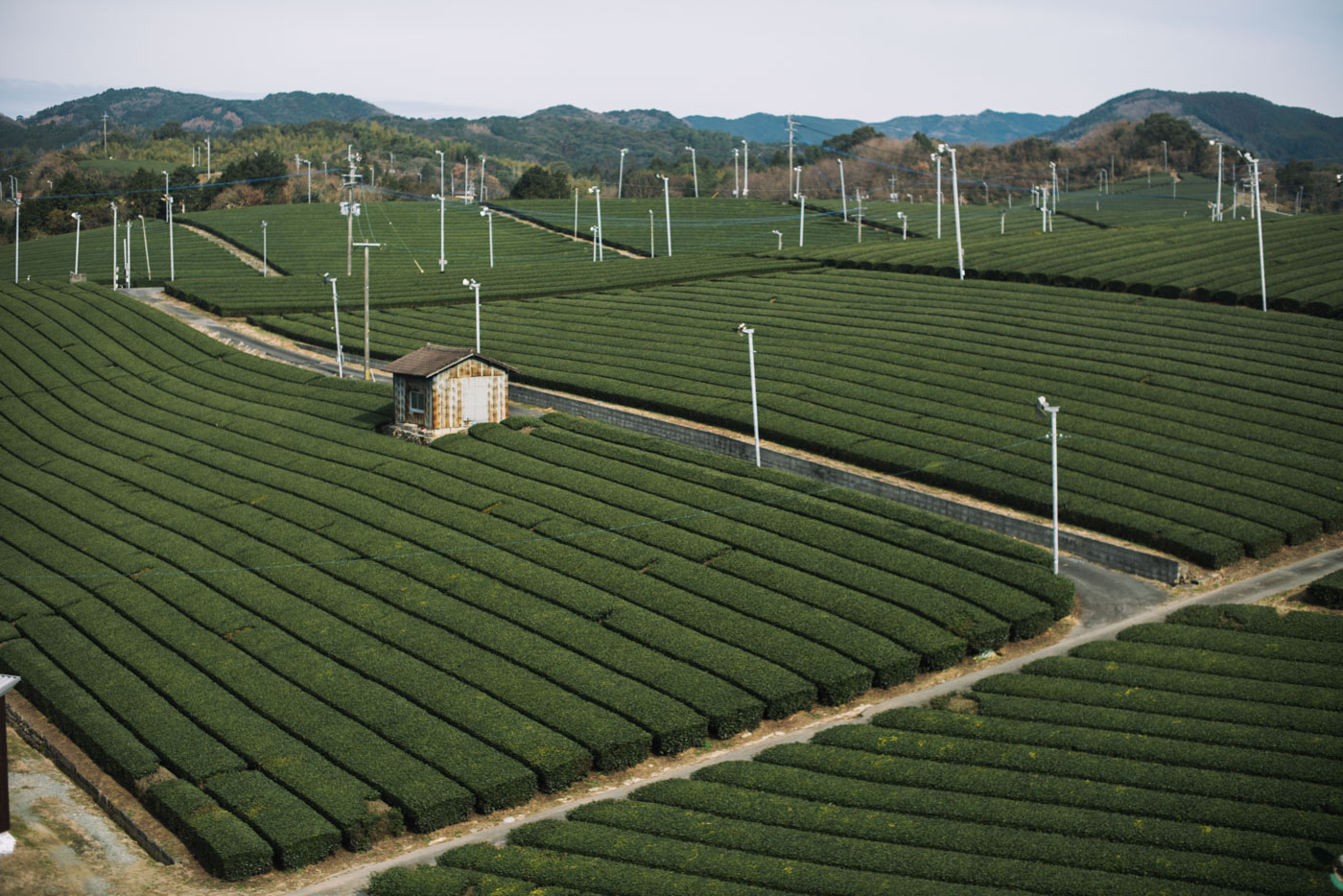

My group rides along a narrow dirt road in the mountainous countryside, climbing higher with harrowing switchbacks until we reach a small, secluded field where two men await us. This field belongs to Masahiro Kuma and his father, who had previously grown sencha for 40 years, and Gyokuro for the last two. Compared to the surrounding sencha farms, this little Gyokuro field looks like a backyard garden. There’s about half an acre of foliage with metal poles placed throughout, and pathways much wider than that of the other fields. Gyokuro is distinguished from other senchas by the act of shading the plant during it’s prime growth time. As areas begin to sprout new growth in spring, the farmer gradually covers the plants to protect them from sunlight. Higher light and temperatures make the plant grow faster and develop bitterness. The amino acids are unable to catch up to the new growth. By stunting them, the plant uses all the energy to sprout five new leaves, making them sweeter, with a strong umami flavor and higher caffeine levels. While other areas of Japan claim to grow Gyokuro, it is mostly shaded sencha. The title Gyokuro is almost indistinguishable from this region, and Yame is famed for superior quality.
Location is the strongest factor in farming. Kuma’s field is tucked away in a foggy mountain cove where the sun rises late and sets early, and the temperature is cool throughout the year. Being isolated in this higher elevation means Kuma doesn’t have to worry much about bugs. There is only one harvest a year, in April, as opposed to the three harvests you get throughout the year from sencha. Because the leaves are so delicate, each Gyokuro leaf is plucked by hand, taking only the top two leaves from each branch. Even plucking with too much pressure can damage the cells, rendering the leaf unusable. With one silent, graceful swoop of the hand, Kuma’s father demonstrates how to pluck the best leaves and passes them around. With a machine, it would take only 10 minutes to harvest a field of this size, but, it takes two to three hours to harvest this field by hand with a yield of only 200 grams. Farming Gyokuro requires daily attention. “Even if tea picking is over, it stays with me,” says Kuma. “I can’t get it out of my mind. After harvest, we focus on next year. Gyokuro is a year-round job, or better yet, it’s a job I obsess over all year long.”
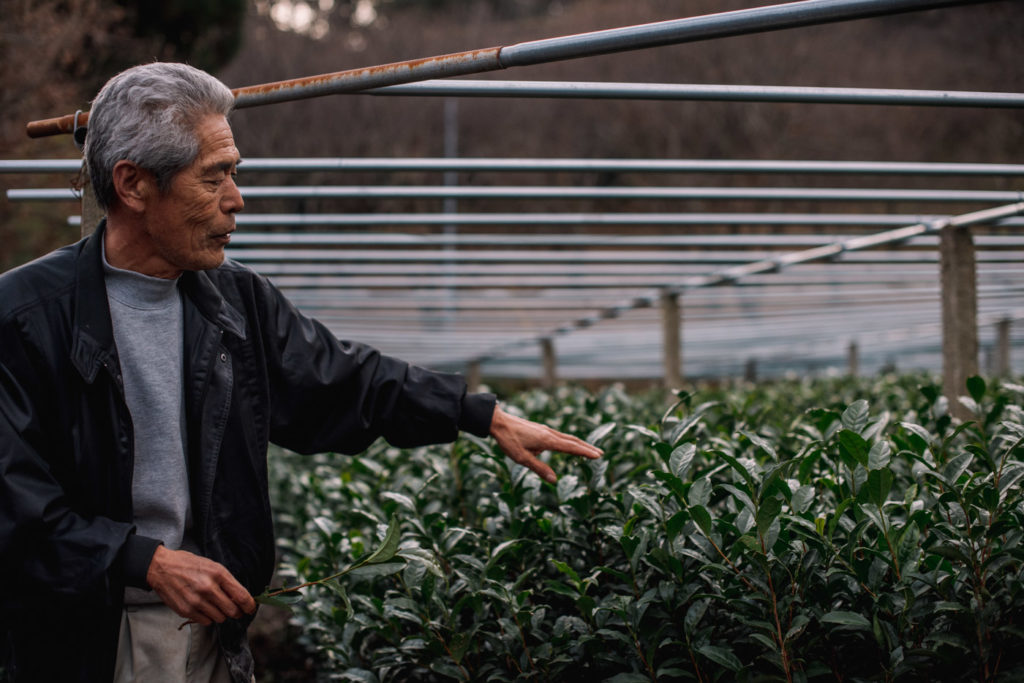
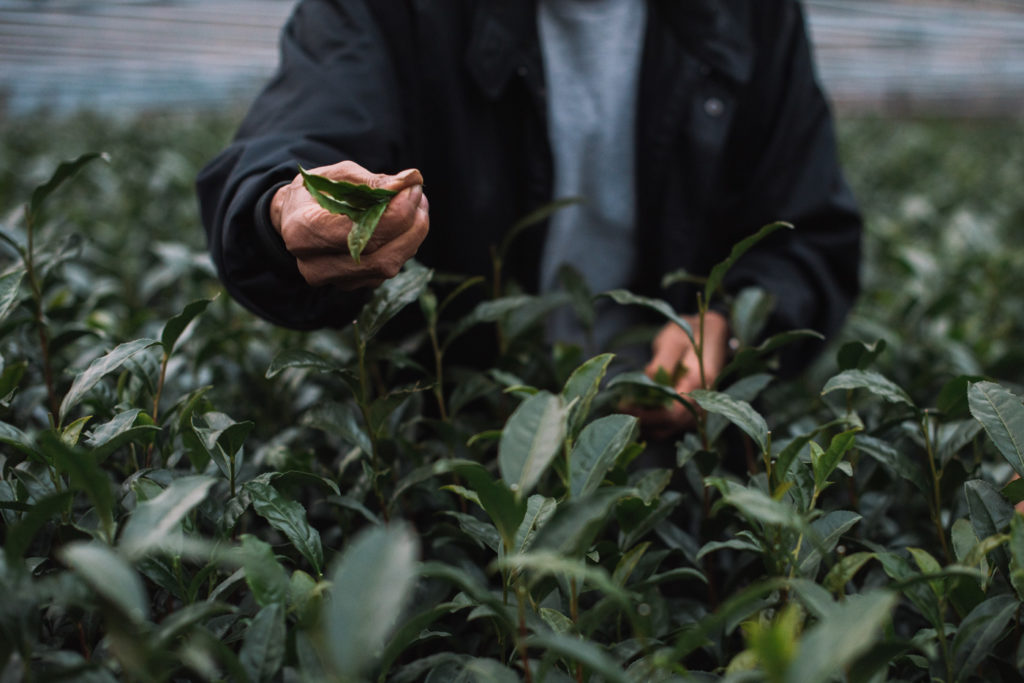
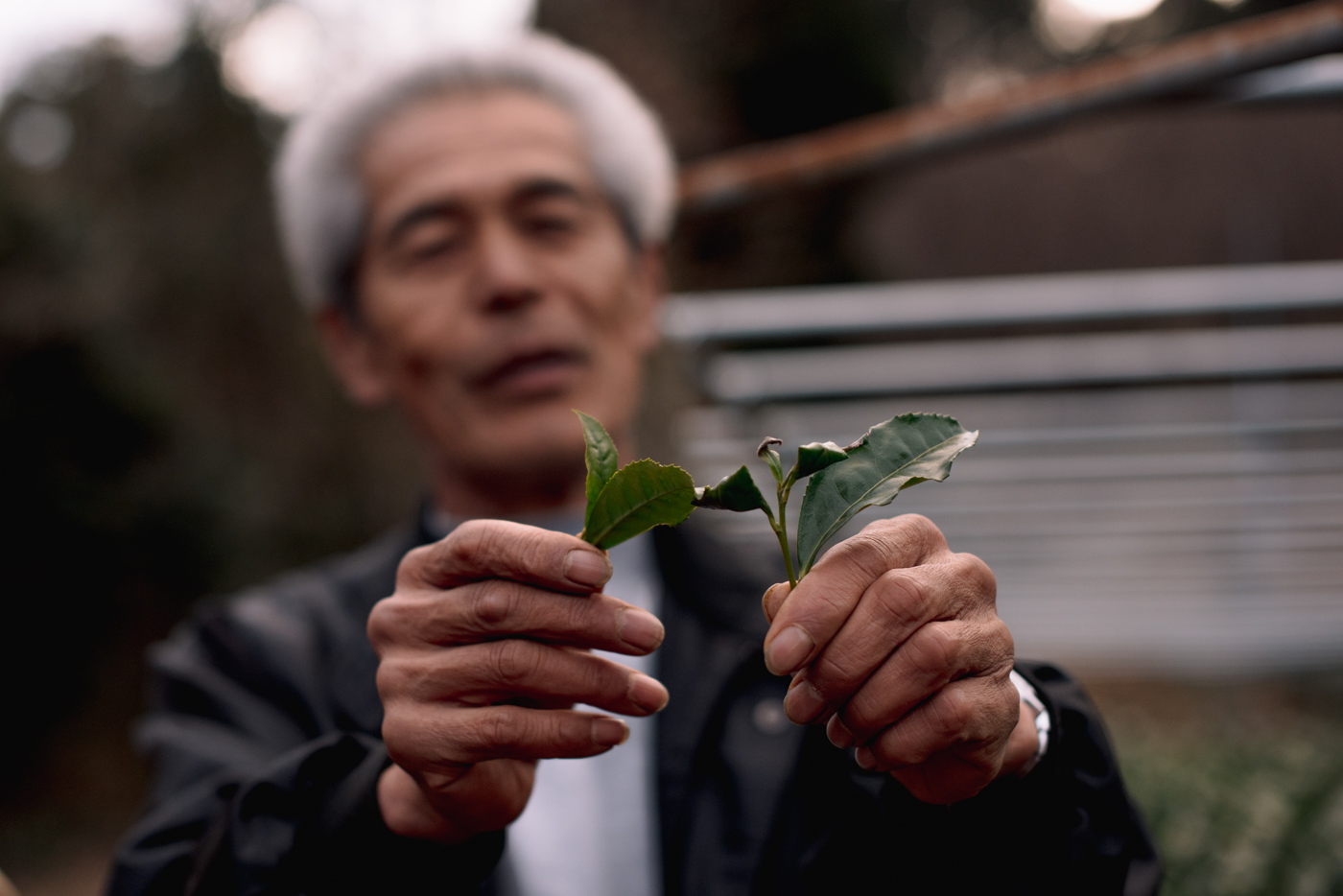
With so little yield, it’s not surprising farming Gyokuro is not a lucrative venture. “If you seek profit, you should not get into this troublesome endeavor,” says Kuma. “I decided to make this tea my life’s work. Gyokuro is not a drink; it is an experience. I want to create something that changes lives.” Most of the tea is sold in the Fukuoka prefecture and isn’t available anywhere else in the world. With a low, local price point, farmers are not able to make money off of their crop, and fewer young people are attracted to the career. Out of 200 Gyokuro farmers, only six are under the age of 40. The city of Yame is worried the tradition will die out with this generation, so they have decided to share Dentou Hon Gyokuro with the global market. It is a pricey tea, meant for consumption only on the most special occasions, but they are hoping that sharing it with the world will save it from extinction.
Later that afternoon, we arrive at a local community building where we meet Takao Shiimado, a native to Yame who has devoted his life to promoting Dentou Hon Gyokuro. We sit at plastic folding tables with a tray in front of each of us. There is a small, ornate porcelain tea cannister, a set of chopsticks, and something that looks like an engraved pink stone. Shiimado explains Yame’s tea history with a PowerPoint presentation. The region has been producing tea for over 600 years, but the quality had been extremely poor. About 100 years ago, few farmers switched to producing Gyokuro, learning techniques from the top producer in Japan, until the region became known for generating the highest quality. Ironically, the descendants of that top producer now visit Yame’s farms for apprenticeships.
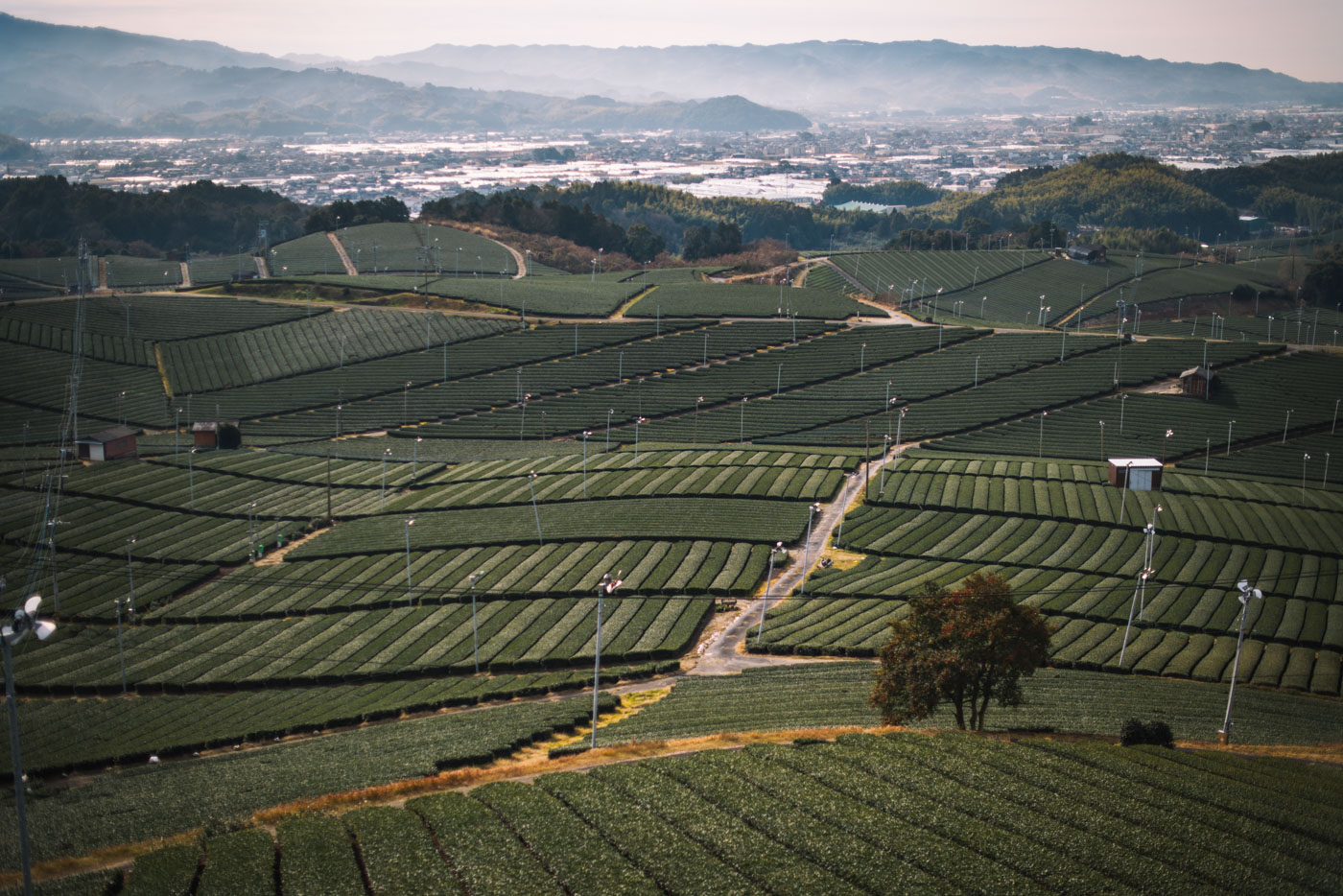
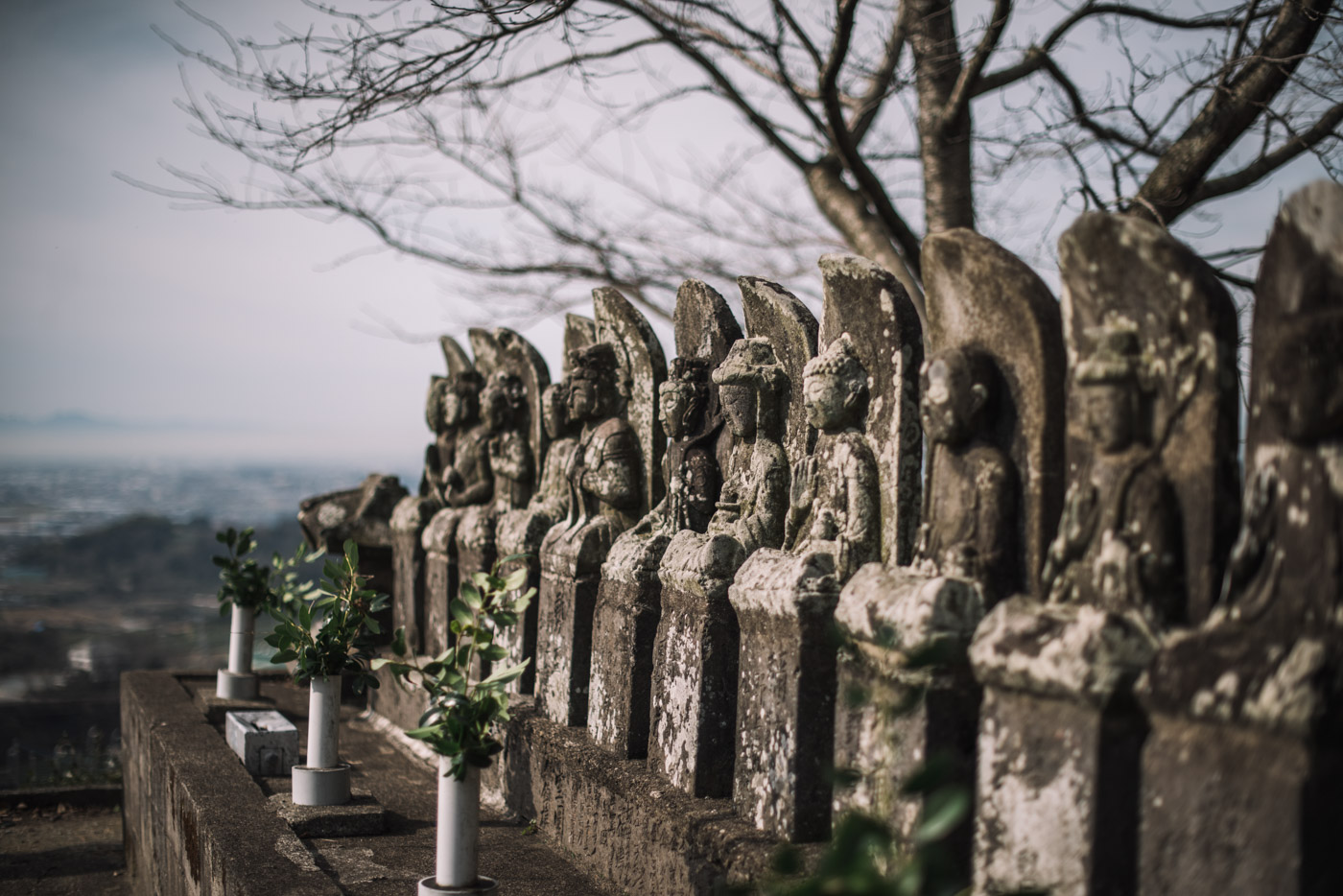
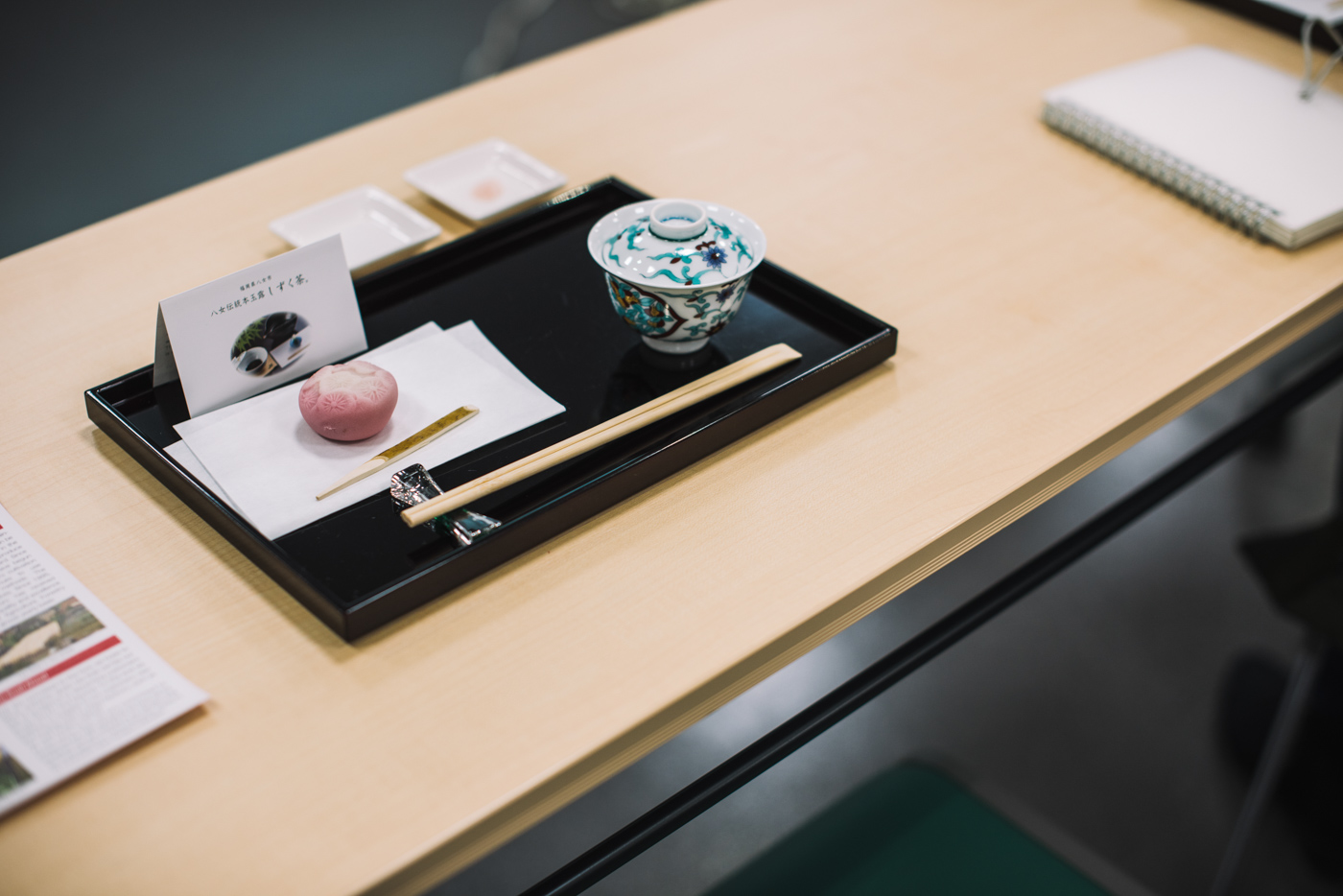
In December 2015, Dentou Hon Gyokuro was awarded a Japanese Geographical Indication certification, an honor given to only seven products that year. Like wine, there is specific terroir in tea, and the GI protects the name Dentou Hon, assuring such labeled products come only from the Yame region. It also protects the land, designating it somewhat as a national treasure.
Shiimado invites us to open our tea cannister and inspect its contents as he warms a pot of water. The needles are long and sharp with a blueish hue. They smell faintly of ocean and vegetable oil. Shiimado believes the tea is brewed best at 40 degrees celsius, or 104 degrees fahrenheit. He gives each of us an individual pourer of water to steep with, and instructs us to drizzle slowly in a circular motion around the circumference of the cup, letting the last few drops fall directly in the center. We replace the lid and wait for two minutes. The leaves unfurl and soak up most of the water, leaving only a splash of excess liquid.
He demonstrates how we are to experience Gyokuro for the first time by sliding the lid of his cup back, tilting his head and letting one drop fall onto his tongue. I follow his example, wondering why he would have us go through the trouble of steeping such a tiny amount until the beadlet hits my tongue and I am overwhelmed by a flavor I have never before tasted. It consumes my senses, but my vocabulary fails me to describe it. It is almost like the sea, or mushroom broth, or cut grass, with a woodsy aroma on the back end. As if I was drinking a cup of umami itself, an experience of the entire palate, leaving a soft, creamy residue on the tongue and a deep curiosity for more. You can even feel it in the glands under your neck. For the moment, everyone is speechless. Shiimado breaks the silence, saying in English, “I put my life into one drop.”
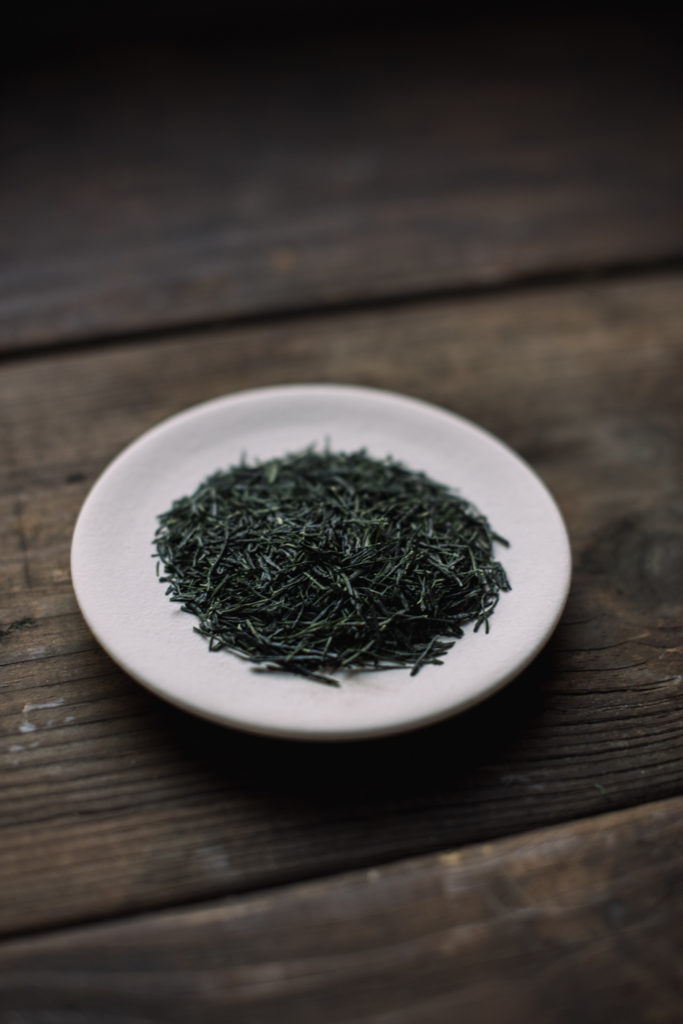
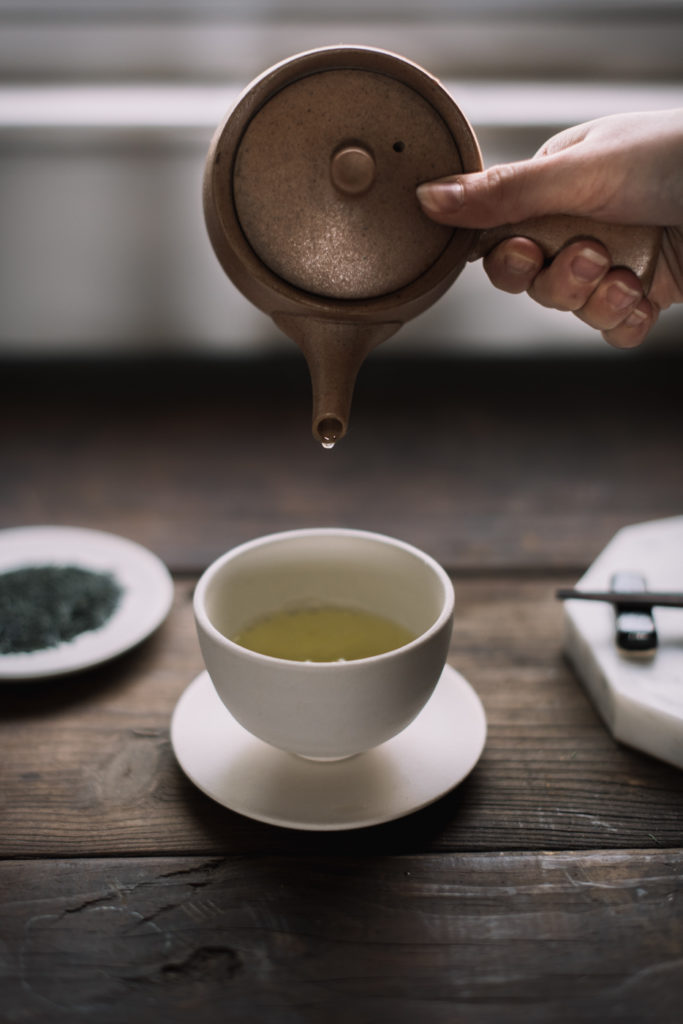

Shiimado breaks the silence, saying in English, “I put my life into one drop.”
We return for a second steep, Shiimado’s favorite round, adding more liquid than before. This time the flavor is a little cleaner, and I detect more sweetness. On the third steep, the flavor starts to fade, and Shiimado places a small serving of vinegar and salt in front of our trays. He tells us the Japanese people believe in completion of all things, and we shall complete our tasting by consuming the leaves. Using my chopsticks, I try a pinch in the salt, then in the vinegar. It tastes like the steamed spinach my mom used to make in the summer. It’s delicious, but so different from the tea we just drank. Our tasting is completed by eating the pink stone, a local sugar pastry called Higashi. Perhaps it was a combination of the jet lag and caffeine, but that flavor followed me like a tipsy buzz throughout the rest of the evening, right up until I laid my head on the straw mat of my ryokan.
The next day, we head to Kiya Horyouen, a respected tea shop owned by Japanese tea master Yasuhiko Kiya. We selected several different types of tasting vessels: mugs, red and white wine glasses, and snifters to see how they change the nuances of flavor. To give us perspective, Kiya begins by serving iced sencha brewed the previous night in our chosen vessels. Mine is a white wine glass. The tea is clean, vegetal, and incredibly refreshing; most of the flavor surfaces after I swallow. I had never considered drinking tea out of a wine glass, but it changes everything.
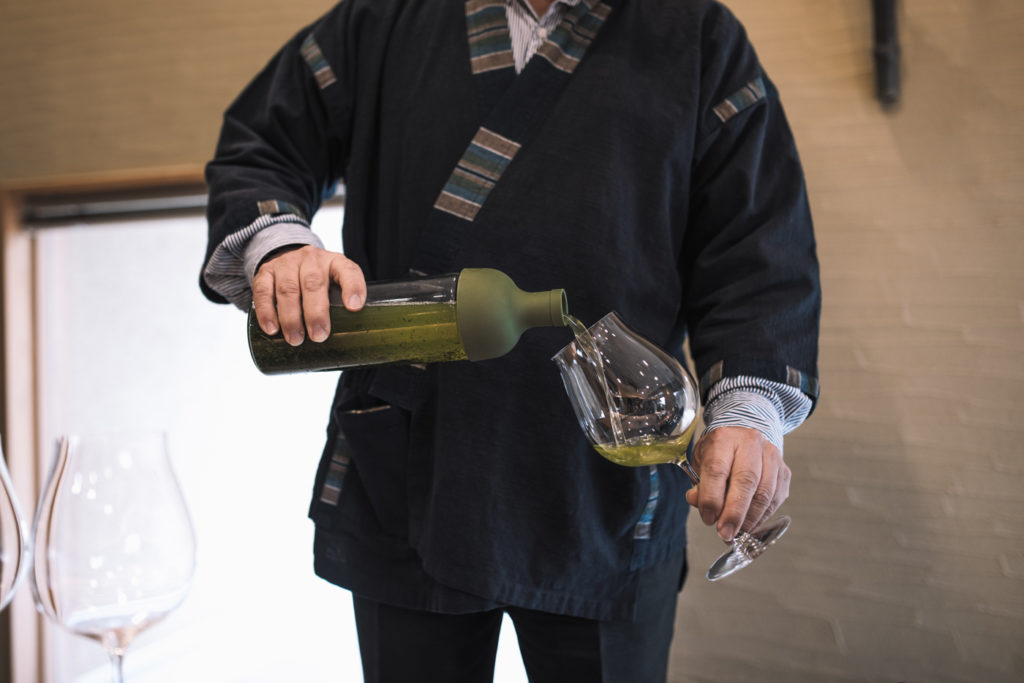
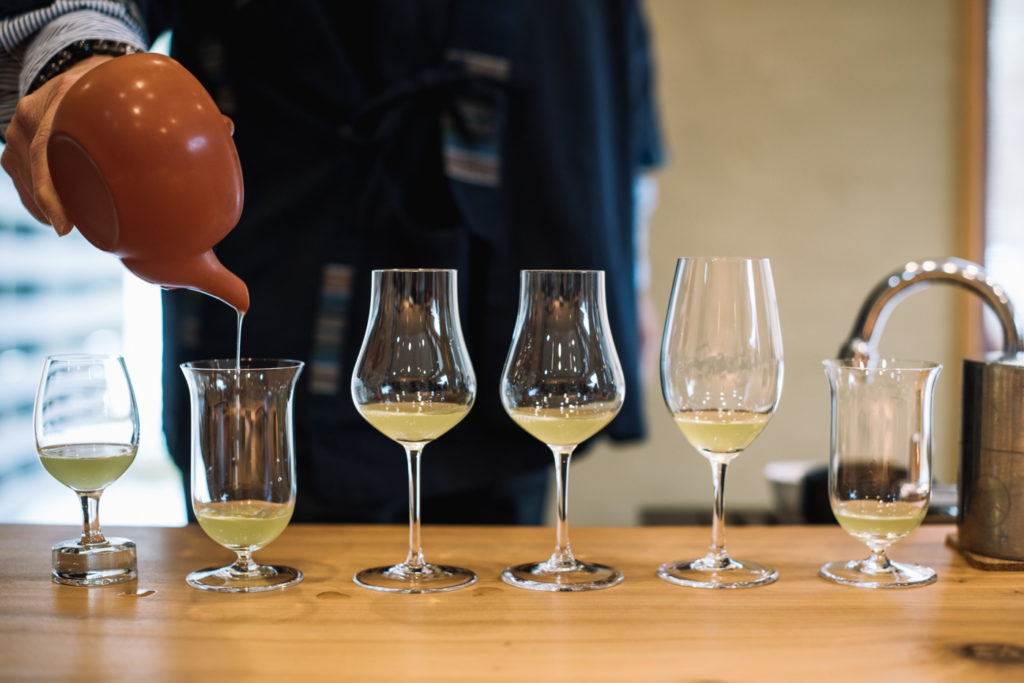
On the second try, I use a whiskey snifter. The flavor is subtly altered, and I am certain the wine glass is a better choice. We move on to Gyokuro. Kiya too has dedicated his life to tea and has differing opinions from Shiimado on how Gyokuro should be appreciated.
Although they are technically competitors, they have a deep respect for each other. Shiimado is present for this tasting. In a single teapot, Kiya weighs 12 grams of Gyokuro—three grams per person. He portions water out from a large pot built into the table into a smaller cup, keeping it in his hands until it cools to the perfect temperature. The care he gives to this process shows in the way he elegantly holds each object. Every action is executed with poised intent. He pours the water into the teapot in a circular motion and covers it. He then folds his hands, smiles and says, “The brewing time is meant to be enjoyed just as much as drinking the tea.”
We wait for two minutes before Kiya pours the tea into mugs, making sure each one gets some of the last drops. Meeting Gyokuro again, it still looks so unassuming. The liquid is so pale it’s hard to believe it’s not just a cup of warm water, but it’s one of the most powerful things I’ve tasted. The second steep takes only 90 seconds and Kiya pours the tea into snifters. It still has all the punch of the first round. On the third, the flavor starts to calm, and on the fourth, the tea is just a whisper. We don’t eat the leaves today because Kiya says, “The tea is satisfied.”
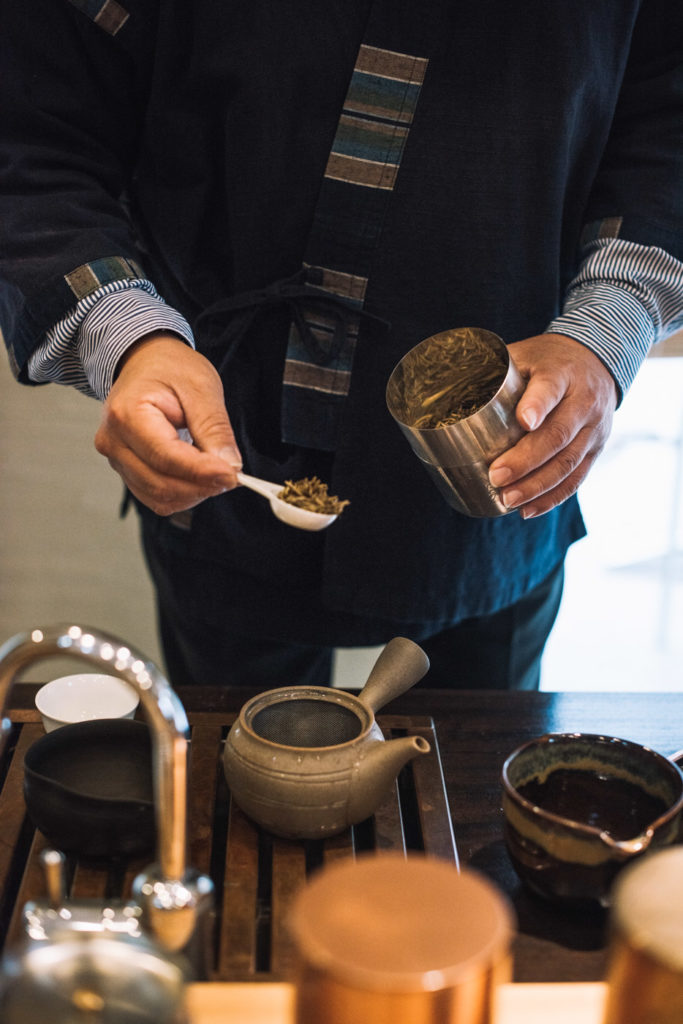
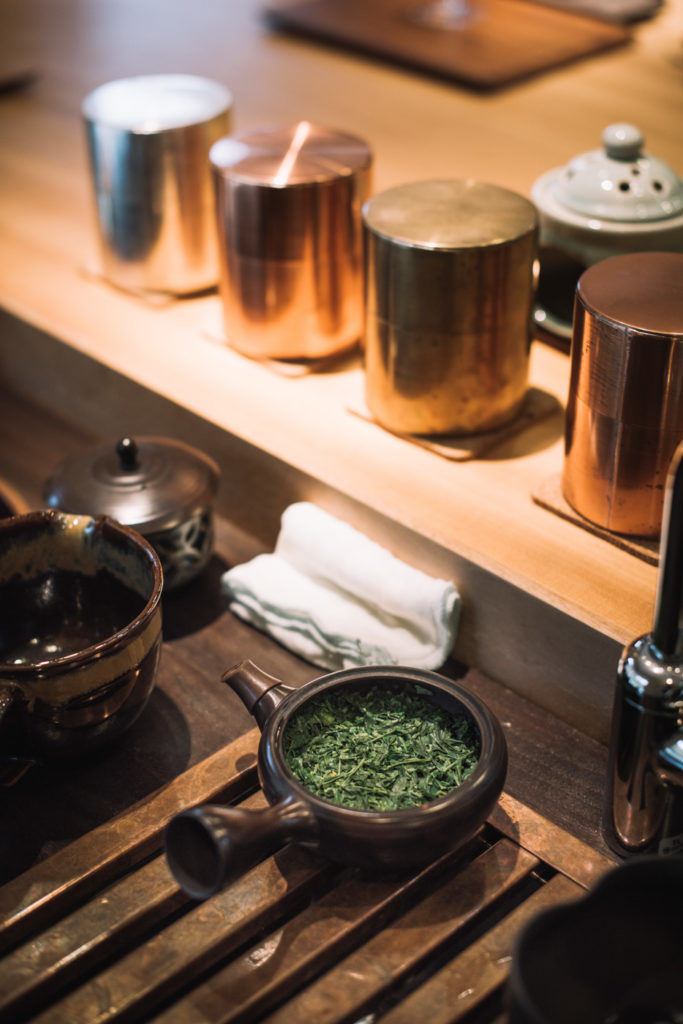
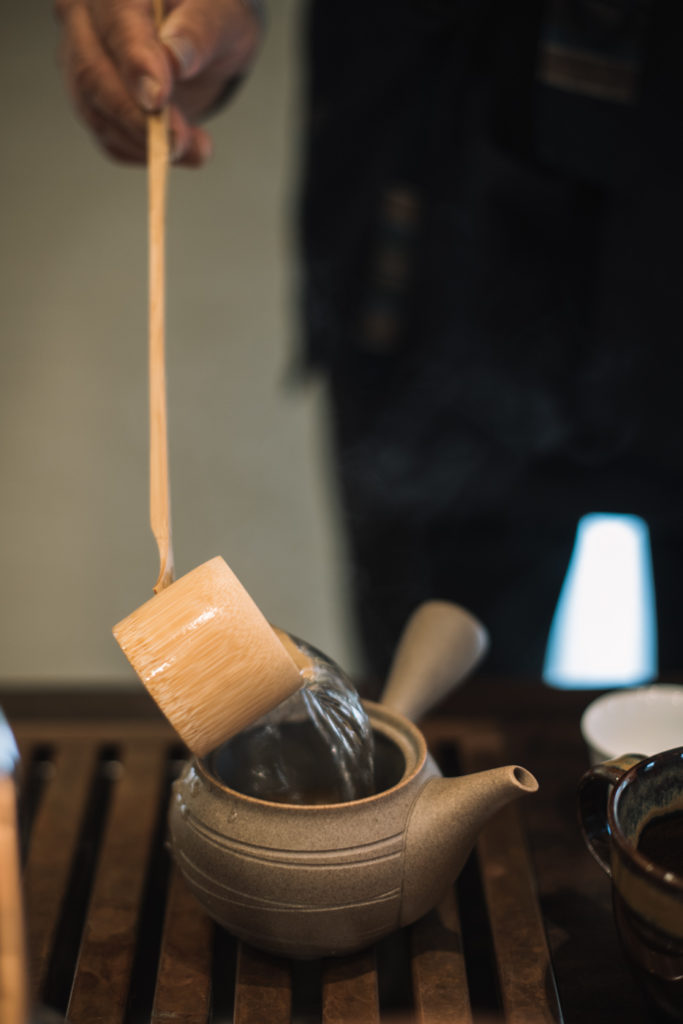

He serves us an assortment of Higashi, and a sample of candied yuzu, which tastes like spiced orange marmalade, before we try the Gyokuro iced. It shouldn’t taste so powerful, but it defies the idea that higher temperatures mean stronger flavors. Before we leave, I stock up on an assortment of different teas from his shop, and he generously gifts me two packets of Dentou Hon Gyokuro—six servings. I bow and thank him, saying “Arigatou gozaimasu” about 12 times before boarding the bus back to the airport.
Since returning home, I’ve brewed two of the three servings in one packet just for myself, trying to pick apart what it is exactly that tastes so unique. Part of the beauty is knowing its story, knowing Kuma, Shiimado and Kiya. Knowing the high standards of the Japanese are indivisible from their deep respect for the land and traditions. Sipping takes me back to that beautiful chaotic journey. I’m saving the rest for a moment of celebration, though. It is too special to drink for examination. Every drop is full of gold.
Editor’s Note: This Thursday, March 9, the tea will make its official U.S. debut at a tasting in New York City. Guests will enjoy Dentou Hon Gyokuro prepared by Yame’s tea masters and paired with dishes from chefs Kyle Connaughton and Matthew Siciliano of Singlethread Farms.

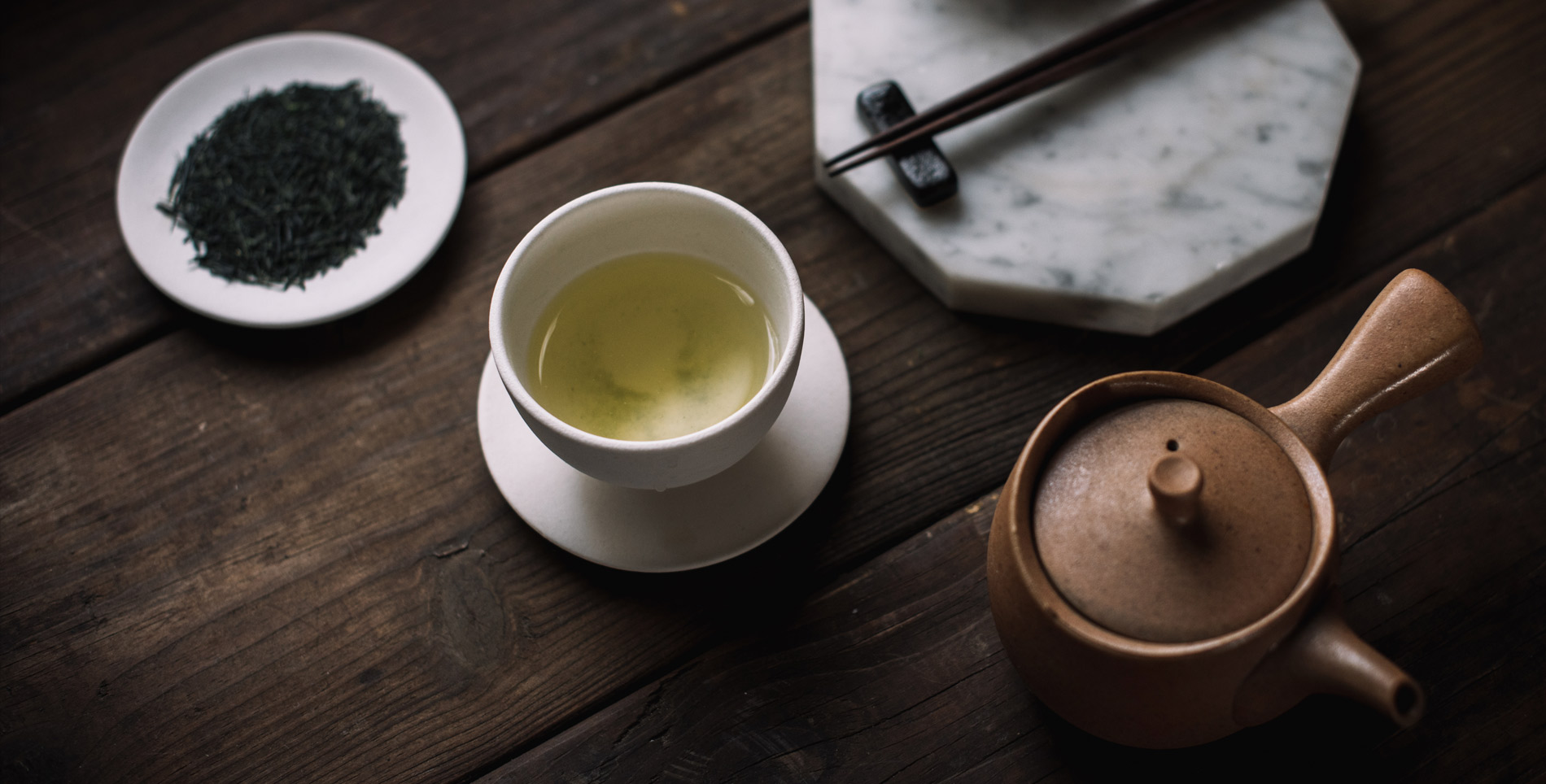

Our comments section is for members only.
Join today to gain exclusive access.